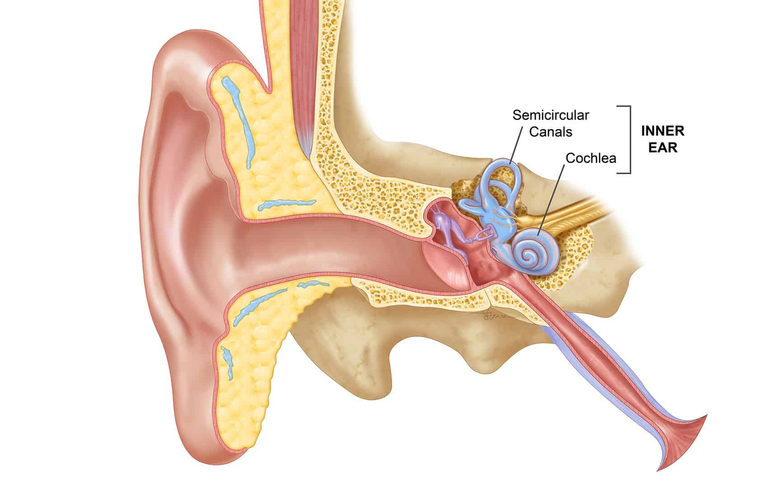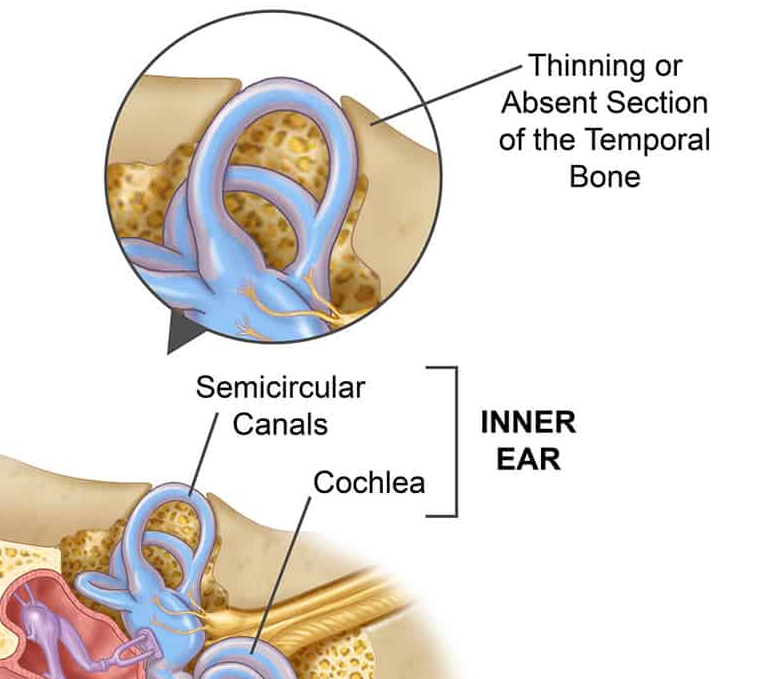What is Superior Canal Dehiscence Syndrome?
Superior Canal Dehiscence Syndrome (or SCDS for short) is a rare inner-ear condition, which can impact hearing and balance.
SCDS is sometimes also known as:
- Superior Semicircular Canal Dehiscence (SSCD)
- Semicircular Dehiscence Syndrome (SDS)
- Superior Canal Dehiscence (SCD)
- Minor's Syndrome (named after Dr. Lloyd Minor who discovered it)
... but is commonly referred to as SCDS within the community.
This website is intended as an introductory guide for those that have been recently diagnosed with SCDS.
Note: this is a volunteer-ran/non-medical website, and should be considered a basic introduction rather than a comprehensive overview of SCDS. For an in-depth understanding of this syndrome, speak to a SCDS specialist or visit one of the online support groups.
How the Ear works
Your ear has three parts: the outer, middle, and inner ear. Sounds waves travel from the outer ear through to the eardrum in the middle ear, and then finally into the inner ear.
The inner ear consists of canals (which controls your balance system) and the cochlea (which allows you to hear).

The semicircular canals within the inner ear are three fluid-filled tubes, which are encased in a bone wall.
When you turn your head, the fluid within the canals moves about, sending signals to your brain about which direction you are turning. These signals are part of the vestibular system, which is how the brain detects and controls our movements and balance.
If you spin around fast on a merry-go-round or carousel, you will feel dizzy after you have stopped moving because the vestibular system still thinks the body is in motion.
What is a Dehiscence?
A dehiscence (pronounced de-hi-sense) is a medical term that means "rupture" or "opening".
A dehiscence of the superior canal is when an opening or thinning of the bone wall that surrounds the top canal occurs:

What causes SCDS?
It is suspected that SCDS is congenital - that is, people are born with a thinned bone that surrounds the superior canal.
The bone can continue to thin as we age, as it is one of the few bones in the body that does not repair itself, and the thinned bone can form a dehiscence naturally over time. In some cases, a dehiscence can also occur due to head trauma.
What are the effects of SCDS?
A dehiscence can have two primary effects:
Auditory: SCDS can cause internal body noises that normally can't be heard (such as your heartbeat, or your own voice) to enter into the inner ear through the dehiscence and reverberate in your ear.
Vestibular: SCDS can cause the fluid in the superior canal to dysfunction, causing vestibular issues such as dizziness and imbalance.
SCDS symptoms are described in more detail in the next page.